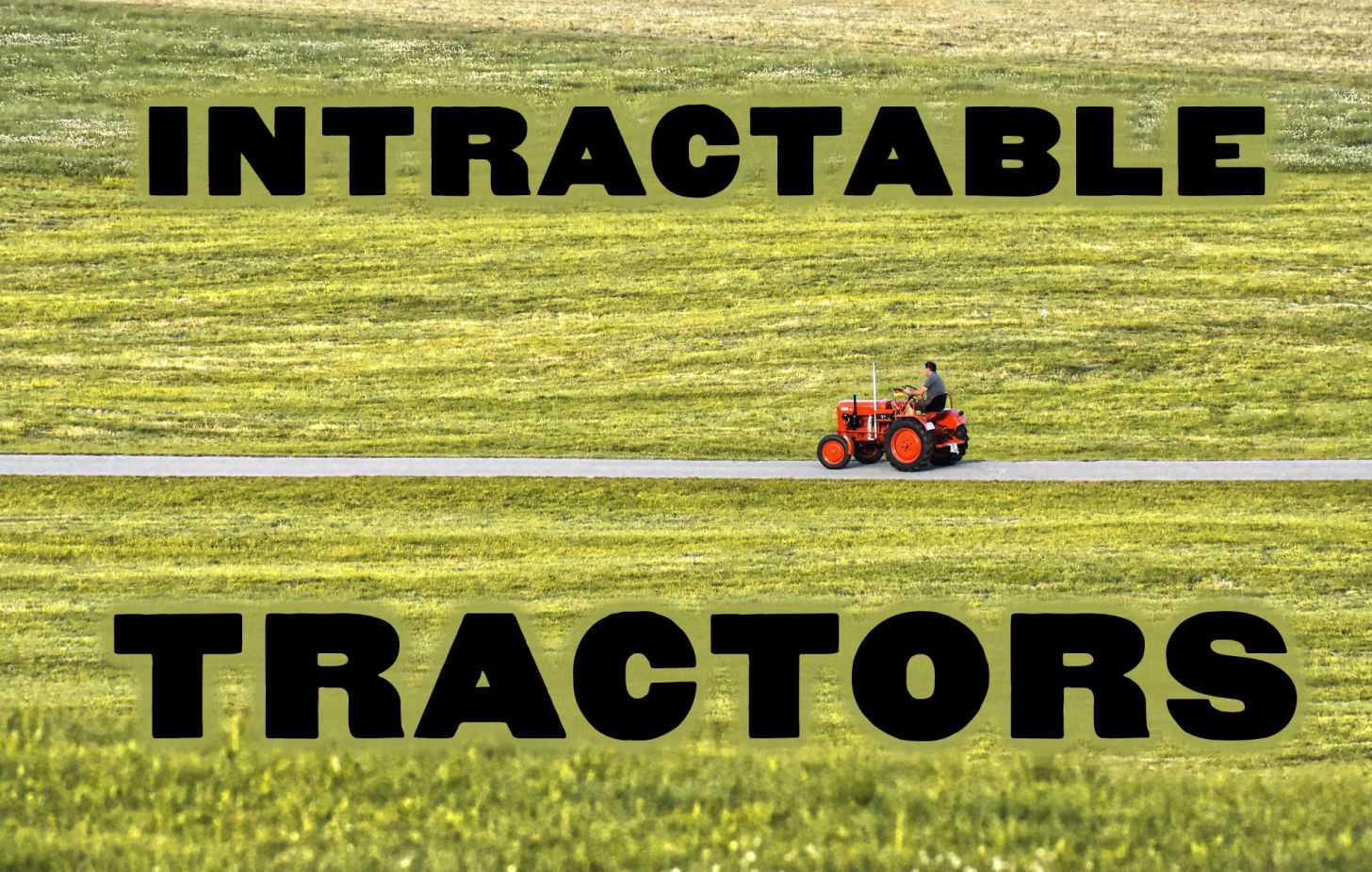

As newbie gentleman farmer, I knew nothing about tractors—except that I needed one. Unfortunately there is absolutely nowhere to turn for helpful information. That sounds like an exaggeration, but tractors are, well, intractable.
First, the usual suspects don't sell tractors. Home Depot and your local lawnmower store might have gizmos they call "tractors" but those shiny machines are primarily designed to make you look manly for the 19 minutes it takes to mow a suburban lot.
Real tractors are sold by farm implement dealers. On my first visit, it became immediately clear that these husky fellows had no idea how stupid I was about this stuff. They tried to help. But I'm sure they cringed when I asked if I needed one of those scoopy-things on the front of my tractor. They politely asked about my soil, crops, and acreage, but all I could muster in response is "how much is that one with the big wheels?"
Farm dealers typically line up their tractors out front in descending size, like those "evolution of the horse" illustrations in biology textbooks. A big tractor can sell for $500,000, so I was looking on the far other side of the display, just one step up from the toy tractors they sell to farm kids for their sandboxes.
I'm sure they cringed when I asked if I needed one of those scoopy-things on the front of my tractor.
But picking a tractor is just the first challenge; next you need to select your implements. Allow me to explain: A tractor's purpose is mainly to pull other things that actually do stuff... like plow fields, mow grass, or spread ripe cow manure. There are an infinite number of implements; I settled on a rototillery-thing and a mower/chopper thing, and a discy thing shaped like a Japanese wok that apparently is useful. I got them home and the fun began.
First you have to hook up the implement you want, and that means aligning three connection points in 3D space. This requires a comic ballet of shoving, yanking and coaxing a thousand pound device that is consciously resisting being put into service. It's analogous to pushing your car uphill into a garage that has 1-inch clearance on either side. And once you get your three points hitched, you still have to connect the PTO.
Sorry, I'm getting ahead. A "PTO" sounds like a souped up Pontiac from the 1960s, but actually it stands for "power-take-off," which is the spinning bar that connects your tractor engine to your implement. Modern PTOs have a whole lot of stickers on them that show all the ways it can mangle your body if you don't follow safety procedures. In short, these things can twist you like a soft stick of licorice. Connecting the PTO requires you to simultaneously push and pull a grease-laden bar repeatedly until it seats properly. This takes practice, like any other athletic endeavor. But there are no personal trainers that specialize in sculpting the muscles needed for PTO wrestling.
The other thing they don't brief you on at the farmer-man store is how often you have to maintain your tractor. One Saturday as I was cutting tall grass, I didn't realize my radiator was getting clogged by blowing chaff. I later learned you are supposed to lift the lid and clean the filter every 20 minutes or so. I didn't, and that meant my tractor overheated. Eventually I figured out there was an issue, and opened the hood just in time for the radiator cap to burst off and shower me with boiling water. Fearing serious burns, I raced to the urgent care center, only to learn there is nothing urgent about an urgent care center. Luckily my injury was minor.
The lesson here is that if want a machine to work your small acreage, you need three things 1) Tractor 2) Implements 3) Health insurance.